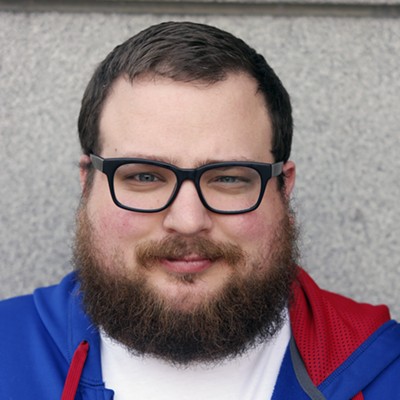As of August 31, Dallas drivers have killed 31 pedestrians in 2015. That's already more than 2014 (22) and almost double the number killed in 2013 (16). In 2015, at least one pedestrian has died in 13 of the city's 14 City Council districts — only Sandy Greyson's District 12 has survived unscathed. The average 2015 Dallas pedestrian death happens on a lighted surface street at night, away from an intersection. In most cases, the deaths happen because a pedestrian has failed to appropriately yield to a car.
This is not a new problem. Last year, a study from Governing.com revealed that the Dallas metro area has a relatively low rate of pedestrian deaths per capita because everyone in DFW drives everywhere. When rates are calculated per pedestrian rather than per capita, Dallas looks much, much worse. Walkable DFW's Patrick Kennedy looked at the data a few years ago and found that walkers in Dallas are about 52 times more likely to get hit and killed by a driver than walkers in New York City. For poor Dallas residents, the numbers are even worse. According to the Governing study, pedestrians are four times more likely to be killed in areas with a poverty rate higher than 25 percent than they are in an area with a poverty rate of lower than 15 percent.
Dallas City Council members, led by Philip Kingston and Adam Medrano — both of whom represent areas with comparatively high numbers of pedestrians — are aggravated that the city is not doing more to prevent the deaths. Kingston says he wants a strategy to address the problem. He and Medrano are going to get something from city staff when staff briefs the council's public safety committee Monday, but it's tough to call it a strategy.
In its presentation, staff discusses what it has done for pedestrian safety over the past two years, the very same period in which there's been the drastic increase in pedestrian deaths. Staff touts the new way the city's painting crosswalks, newly fluorescent signs and the countdown timers that are being installed each time a pedestrian signal at an intersection gets replaced. (It should be noted here that according to material released by the city in May, Dallas is about $362 million behind in updating its traffic signals, half of which were installed before 1970.)
While doing those things is better than just turning the streets over to guerrilla warfare between the car-driving mob and Dallas' hardy band of wizened pedestrians, the city is not doing any of the stuff that would cause a precipitous drop in pedestrian deaths — like cutting speed limits or slimming down Dallas' wide roads and making sidewalks wider.
"The speed to injury ratio is an exponential curve," Scott Bricker of national pedestrian advocacy group America Walks said in 2014, "at 20 miles an hour, effectively no one dies, and at 40 miles an hour, 95 percent of [people struck by cars] die."
As Dallas encourages walking and transit use, the city needs to develop more appropriate pedestrian policy, Kingston says.
"[City staff] doesn't want to change anything," he says. "Our traffic engineering is stuck in 1963. All [staff] cares about is throughput, if [anything] is going to affect throughput, they're against it."
That goes for Kingston's district downtown, where drivers can routinely be seen screaming at pedestrians crossing with the light in a crosswalk because the driver wants to turn right quicker, and for Oak Lawn Avenue, where Medrano's constituents fight through an intersection at Cedar Springs and Oak Lawn that has no clear way for pedestrians to get across.
"We're basically dragging staff kicking and screaming to this, and I don't understand why," Kingston says. "People are dying."
[
{
"name": "Air - MediumRectangle - Inline Content - Mobile Display Size",
"component": "18855504",
"insertPoint": "2",
"requiredCountToDisplay": "2"
},{
"name": "Editor Picks",
"component": "17105533",
"insertPoint": "4",
"requiredCountToDisplay": "1"
},{
"name": "Inline Links",
"component": "18349797",
"insertPoint": "8th",
"startingPoint": 8,
"requiredCountToDisplay": "7",
"maxInsertions": 25
},{
"name": "Air - MediumRectangle - Combo - Inline Content",
"component": "17105532",
"insertPoint": "8th",
"startingPoint": 8,
"requiredCountToDisplay": "7",
"maxInsertions": 25
},{
"name": "Inline Links",
"component": "18349797",
"insertPoint": "8th",
"startingPoint": 12,
"requiredCountToDisplay": "11",
"maxInsertions": 25
},{
"name": "Air - Leaderboard Tower - Combo - Inline Content",
"component": "17105535",
"insertPoint": "8th",
"startingPoint": 12,
"requiredCountToDisplay": "11",
"maxInsertions": 25
}
]











